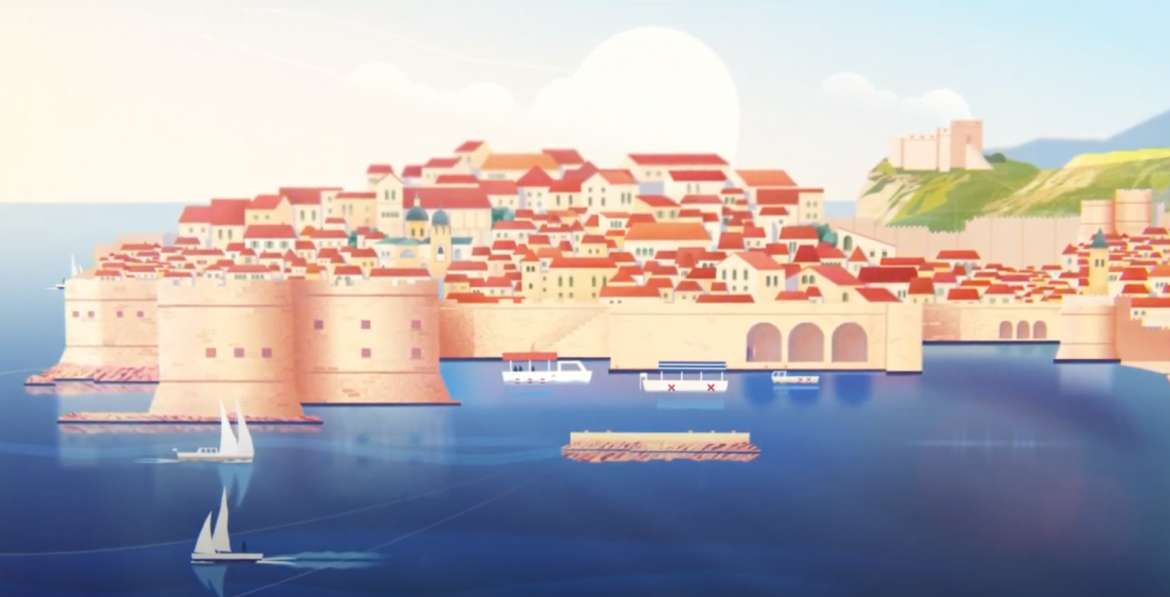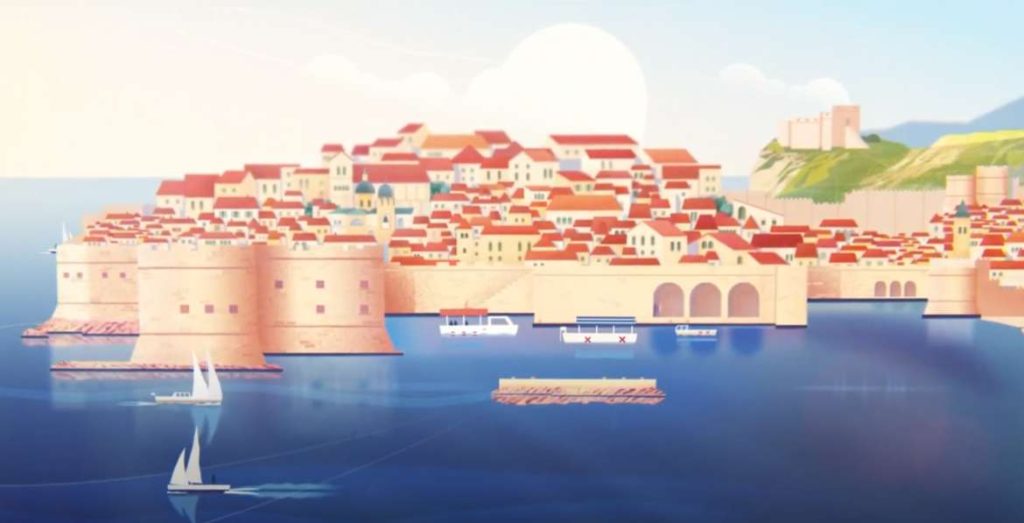
July 3, 2020 – The animated film ‘Dubrovnik – Safe Vacation’ is part of the marketing campaign of the City of Dubrovnik and the Dubrovnik Tourist Board to revitalize tourism post-corona.
Dubrovacki Dnevnik reports that the 1.33-minute long cartoon, worth 100 thousand kuna, was to be placed on domestic and foreign markets, on airplanes and on cruisers that might have sailed to Dubrovnik in 2020. The City and the Tourist Board decided to step outside of the advertising box and show the beautiful Dubrovnik in a different light. While some applauded the campaign, others are laughing.
The animated video, which has since been removed on YouTube but can be seen on Vimeo, features Knight Orlando, who tells viewers about the beginnings of quarantine in Lazareti in 1377 and explains how to fight epidemics, while presenting the beauties and offers of Dubrovnik. Orlando emphasizes that Dubrovnik is still a safe city that cares about health. ‘We knew then, we know today’ is the conclusion of the animation, which aimed to attract tourists to this ‘safe’ Croatian destination.
“If, for example, they were British, would they decide to visit Dubrovnik because of the animation?”, the former Minister of Tourism Pave Zupan Ruskovic said briefly.
Of course not.
The cartoon talks about what the Republic did centuries ago and ‘what it did then is certainly not a guarantee that it will work today’.
“People are interested in what has been done today in that sense, if that is their motive for coming. To claim that we are a corona-free destination at the moment is an unreasonable message. It should be realistic because the worst is when the guest feels cheated, and it is the biggest possible anti-advertising,” says Ruskovic. She thinks it’s good if the animated film is intended for the youngest, but she also wonders if the children even know who Orlando is?’
The long-time leader of the Croatian Tourist Board and former Minister of Tourism Niko Bulic believes that ‘the animated film tells the story and now is the time to attack and attract attention’.
“We are here, we are safe, we are beautiful, come! I would go the other way around, with stronger messages, invitations, emphasizing the beauties of Dubrovnik. Like other countries, go with a direct message,” believes Bulic, who sees the biggest problem is the fact that the tourist bourds have been left without an inflow of money, and there has been no reaction from the Government. For example, he states that in 1999, the government approved special funds for the promotion of Croatia due to the action of NATO forces in Kosovo.
“We should have reacted in March and prepared an action that would be a direct call saying we will be ready, come. Direct promotion, and not stories that are for a nice time,” says Bulic.
Although he did not see the cartoon, the former first man of the Dubrovnik Summer Festival and Marin Drzic Theater, Petar Miso Mihocevic, points out ‘if it is expertly judged that such a campaign makes sense, if it is well marketed and the target audience is known, it certainly makes sense because animations are a serious thing, and they are awarded Oscars’.
“It can be a real way of presentation that is not documented by anything or already overused photos, recordings, videos. Unfortunately, we only sell beauty and never content. This is some new content,” Mihocevic says and concludes:
“The beauty of the City is increasingly marred by the surrounding Neum architecture so that it will get lost in that awful ugliness. It may be better to draw it in the future than to show the real picture.”
The cartoon would not attract long-term tourist guide Fran Haklička to the City:
“It is too much, the text is too much, and the animation should not have been done in any way. It ends with ‘we knew then and we know now’ – what is that saying? Dubrovnik has always been wise and modest, and that is not in that film. It is terrible to show the beauty of Dubrovnik by a drawing for 100 thousand kuna,” Haklička complains.
PR expert Kresimir Macan says that we are happy to have this Dream City serve as a backdrop, but we also have an advertisement in which that City is not seen.
“The ad says: come see something you won’t see in the ad. We will see how the people for whom this advertisement is intended will react. In this way, I would advertise a cat in a bag that has nothing to show, and Dubrovnik has a lot to show. The story is good, but it should have been real,” says Macan and wonders if this film creates emotion at all?
“Were the viewers able to connect and say ‘wow, this is beautiful!’? The question is, can you say that with a cartoon? The previous video of the City of Dubrovnik was impressive. I was delighted with the power of the speedboat coming out of the port, and you want to enter Porat at that moment. It is a detail in the direction and emotion that the previous video achieves. There are a lot of moments that draw you to the City. Here the message may have been conveyed but the atmosphere desired was not created. Although, I like the story because it’s a great link to quarantine,” Macan says.
Who will want to come to Dubrovnik based on the video, Macan doesn’t know either.
Maybe the idea was that Dubrovnik is so famous, so it doesn’t have to be advertised with photos. There are a lot of assumptions.
After this, Dubrovnik will receive another cartoon, which will promote the ‘Respect the City’ campaign.
To read more about lifestyle in Croatia, follow TCN’s dedicated page.










